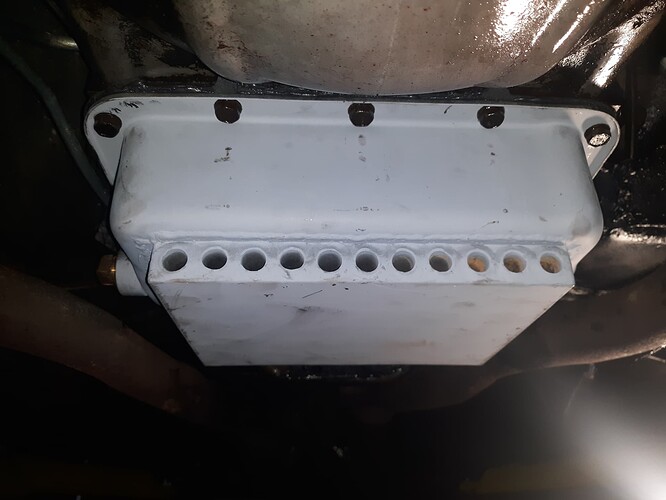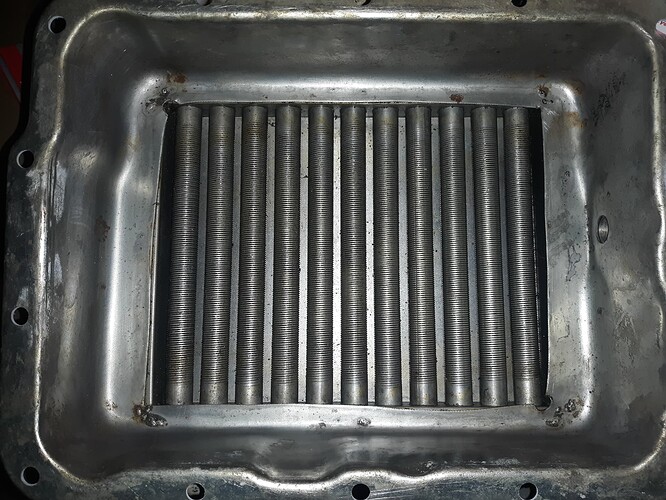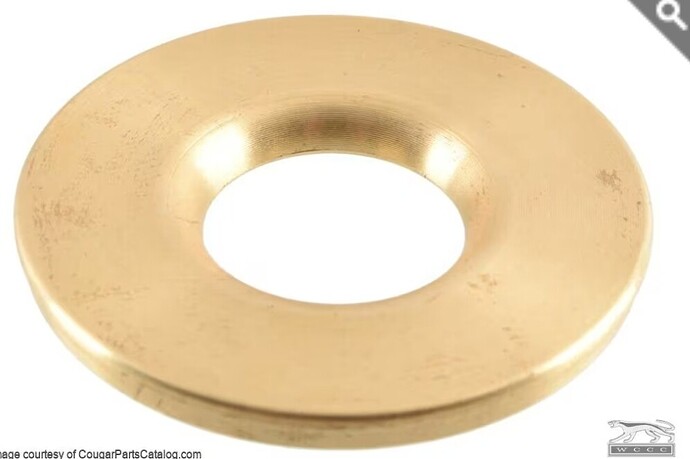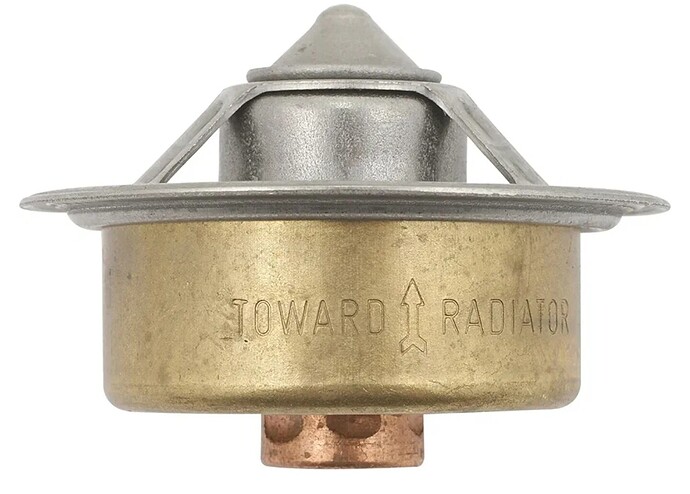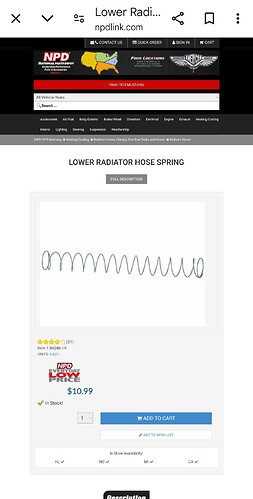My 1970 had the original transmission pan and it was tired, very tired. On Thanksgiving day, I found one on ebay and it came with a “race mod” from an old timer down south. Installed earlier this week and with a new modulator valve, feeling good about no leaks, a little extra cooling, and a snappier shift. Alas, time to put the Cat down for a winter nap…
Cool…
Interesting. Are you having cooling issues? I’ll be interested to hear if this helps. I have seen water cooled pans used by drag racers to solve overheating transmissions…
On hot days and in traffic, no overheating as of yet thankfully but it gets hot. Local guys say put a 180 thermostat in there with mod pinhole plate and ditch the the 195 Cleveland type thermo. On the bright side, when i drained transmission fluid, it looked great. We’ll see next year…
Colder thermostat won’t help anything. It like turning down the thermostat on your AC when it already can’t cool the house. Most critical thing on a Cleveland is to use the Cleveland specific thermostat
I use regular 195 thermostats in my 351Cs and don’t have any overheating issues. A 180 thermostat can can work counter-intuitively as it will keep the water in the radiator for a shorter duration causing it to cool less.
The pan won’t help an engine that is overheating, though. Transmission cooling and engine cooling are independent.
Thanks for comments all, appreciated.
Most Clevelands, (including my 71 Boss 351 Mustang I owned), in my experience, have the incorrect thermostat in them (being replaced by other owners over time), and often the restrictor insert is also missing. If you don’t have this brass insert in your block, when the thermostat is in operation, the heads are not having water diverted to them properly for cooling, and you get overheating issues from lack of a better word or description, “cavitation”.
IF you do NOT have the correctly made thermostat used in conjunction with the brass insert, it still will not work to cool correctly. You MUST have both.
Correct Cleveland specific thermostat and diverter disc, sufficient airflow, sufficient water flow, correctly sized and clean radiator, good hoses with internal spring in the lower hose to prevent collapse, correct cap-both pressure and double seal type if you have a recirculating reservoir, and correct coolant mix. These broadly apply to any water cooled vehicle with cooling issues excluding the Cleveland specific thermostat and diverter disc of course.
Yes, this is the correct thermostat and restrictor plate, and the problem without them is actually worse than cavitation. Without both, most of the coolant gets recirculated through the engine rather than through the radiator regardless of whether thermostat is open or closed. The system is designed to do this with the thermostat closed, but when the thermostat opens, it needs to close off the recirculating passage so the coolant will be forced through the radiator instead. This can’t happen without BOTH the correct thermostat and restrictor plate like Ramairguy said.
My car came with a 20” wide radiator and the PO had installed a 5 blade OEM fan and shroud. It did have the diverter but not the Cleveland specific thermostat. I replaced the entire cooling system in 2017-24” aluminum rad, dual electric fans, PWM control, FlowKooler water pump, 195f thermostat, new hoses, radiator cap, fluid, heater core, recirculating tank instead of overflow hose, and coolant. I no longer have any cooling issues regardless of ambient conditions and driving situation.
Mine had the wrong one in when the heat issues happened (not my handy work). I replaced pump, hoses, and put in flowkooler 195f with correct plate, moved fan closer to radiator (it was way too far back), and no issues since but i haven’t been in traffic on a warm day either.
Winter job may include heater core, was starting to smell coolant at higher rpms and there is slight leak now…looks like a “fun” job based on WCCC vid…
Depending on age of the radiator ie new vs it looks good?, seems ok?, it’s not leaking? so it must be ok?![]() you can’t judge it by looks, IF you have the correct thermostat and restrictor block ring in place, shoot the radiator with a temp gun (as well as the block and heads for a bench mark) etc. If the radiator is absolutely cooking hot, 3 small things to check.
you can’t judge it by looks, IF you have the correct thermostat and restrictor block ring in place, shoot the radiator with a temp gun (as well as the block and heads for a bench mark) etc. If the radiator is absolutely cooking hot, 3 small things to check.
1.) Do you even have, or a correct, fan shroud? If not, get one.
2.) Is the lower or upper hose “collapsing” when the termostat is opening? Is it “kinked” in any way?
3.) Does the lower rad hose have the internal “anti-collapsing” spring in it? Squeeze it, you can feel if its in there or not. If not NPD sells those for $11.
If that all checks out, and seems ok, then next thing, I’d pull the rad and get it re-cored, but first, measure the current distance between the back of the radiator face to the front of your fan blade and the bolt heads. Depending on clearance to the fanblade, ask the shop how much thicker a 3 core or even 4 core is, and how much either will decrease the clearance from the back of radiator to the fan blade, to ensure clearance. Upon their recommendations, 3 core as opposed to 4 core, vs where you live, how you drive, air or no air conditioning, engine mods etc, get it done. DON’T bother with putting in a 2 core, it isn’t worth the time, trouble or money spent over putting a 3 core.
It’s absolutley amazing how plugged up and restricted the vertical core rows get over time. Doing the rad flush with chemicals etc, imo, is not worth the effort or money, UNLESS you’re on an incredibly tight budget, it will help, but only marginally.
Think of your radiator like your heart, it isn’t good if you don’t have good, unobstructed vascualar flow.
Two core aluminum use larger tubes then copper radiators at either 1” or 1.5”. The DeWitt radiator I chose was rated for a big block, has stamped OEM look tanks, fits in the OEM style saddles, and is made in MI-cores and tanks-not too far from me.
